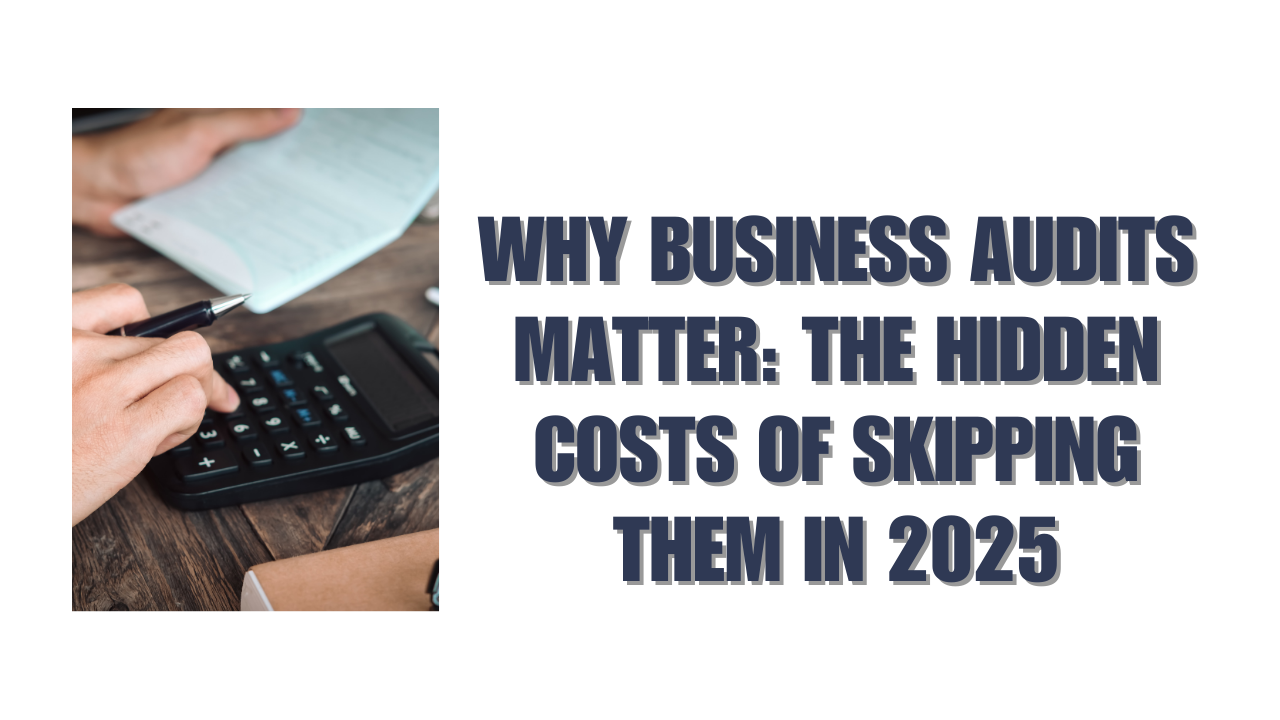Governance frameworks are the foundations of sustainable organizations. Organizations risk operational inefficiencies, compliance violations, and damaged stakeholder trust without proper governance oversight.
A governance audit is a vital part to ensure organizations run efficiently, transparently, and ethically. A well-laid-out audit process helps identify governance risks, strengthen internal controls, and improve ethical decision-making. This applies whether you review an existing corporate governance framework or build one from scratch. Strong governance creates a foundation for long-term sustainability and promotes good decision-making that serves the organization’s best interests.
This piece provides a step-by-step framework to conduct a governance audit, with practical templates you can use right away. We designed this resource to help strengthen accountability and boost organizational performance. You’ll learn about different governance structure models and ways to evaluate your existing governance framework examples.
Ready to reshape your governance practices? Let’s head over to the details.
Step 1: Understand the Purpose of a Governance Audit
Organizations need to know exactly what they want from a governance audit before they start one. These audits help them build a stronger governance system and spot potential issues early.
What is a governance audit?
A governance audit is a systematic evaluation that shows how well an organization’s governance structures, processes, and controls follow its policies, ethical standards, and legal requirements. This detailed process gets into how leadership works, who’s responsible for what, and how accountability systems function within the existing structure.
Auditors take a good look at the organization’s governance framework and check if daily practices line up with core principles. They review decision-making processes, what board members do, and how well the management structure works to find anything that might hurt performance or break compliance rules.
Unlike financial audits that deal with numbers, governance audits look at the basic systems behind organizational behavior and decisions. They check both concrete things like documents and processes, and less tangible aspects like company culture and values to see if they match stated goals.
Why organizations need governance audits
Organizations run governance audits for several significant reasons. These audits help them spot potential financial, reputational, or operational risks that might stay hidden otherwise. On top of that, they make sure everything follows the law and company policies, which helps avoid legal trouble.
Regular checks of the governance system warn organizations about possible problems early. They keep things transparent and accountable, and this builds trust with stakeholders by showing the company’s commitment to doing things right.
The company should review its governance structure often to make sure it still fits with department priorities and runs smoothly. This process lets organizations:
- Reduce risks before they cause big money or reputation problems
- Boost how well operations work through better processes
- Build stronger internal controls and oversight
- Make better strategic decisions with solid governance data
- Gain investor and stakeholder trust through open practices
Types of governance audits: corporate, IT, data
Governance audits come in three main flavors, each looking at different parts of the organization:
- Corporate Governance Audit: Takes a deep look at an organization’s corporate governance framework, including how the board works, follows rules, and handles ethics. This audit checks board oversight, shareholder rights, executive pay, and risk management. The team sees how well governance principles work and tells stakeholders what they find.
- IT Governance Audit: Looks at how an organization manages its information technology. This review checks IT strategies, where resources go, and if systems are reliable. It makes sure IT security matches what the organization needs and that systems stay safe while people follow security rules. These audits answer big questions about keeping assets safe, following rules, and finding weak spots.
- Data Governance Audit: Checks how an organization handles its data to keep it accurate, private, and secure. This means looking at data protection rules, who can access what, and making sure everything follows laws like GDPR and CCPA.
Each type follows similar steps: planning, testing, reporting, and sharing results – though details change based on organization size and audit team knowledge. Understanding these different types helps organizations pick the right audit for their specific needs.
Step 2: Build or Review Your Governance Framework
Understanding the purpose of a governance audit leads to the next crucial phase – establishing or evaluating your governance framework. A well-laid-out framework acts as the foundation for organizational integrity and operational excellence.
Using a governance framework template
Governance framework templates give essential structure to build or review your governance systems. These templates help you establish clear objectives, define roles, and document expectations for business partners and stakeholders. Best practices show that effective templates should outline:
- Strategic objectives for your governance project
- Roles and responsibilities of board members
- Expectations for stakeholder relationships
- Specific, measurable performance metrics
Templates work as pre-set guidelines that help organizations create their governance framework while adapting to specific organizational needs. Most templates have flowcharts, bullet-pointed lists, and other visual aids. These tools help define rules, policies, and processes that arrange with corporate governance objectives.
We created a complete governance charter that establishes your mission and general direction for upcoming projects. Your chosen structure should match your organization’s overall mission and document everything for future reference and ongoing amendments.
Key components of a strong governance structure
A reliable governance structure has several interconnected elements that work together to ensure transparency, accountability, and ethical business practices. The foundations include:
- Board of Directors: Oversees the company’s strategic direction and monitors management’s performance
- Management: Implements the board’s strategies and manages day-to-day operations
- Shareholders: Provide capital and influence major corporate decisions
- Clear Policies: Formal documentation that establishes integrity and ethics standards
Directors, management, and stakeholders need clear role definitions. Studies show that 17% of directors question overall board effectiveness at private companies. The core team might be overworked according to 16% of respondents, while 13% noted too much reliance on management’s information.
Public sector entities need appropriate structures and leadership. People should have the right capacity, skills, qualifications, and mindset to work efficiently. Regular assessment through appropriate metrics and feedback helps measure governance effectiveness.
Governance framework examples from public and private sectors
Public and private sectors use different governance frameworks based on their unique needs and stakeholder relationships.
Private sector models include the Anglo-US model (shareholder-oriented with clear separation between ownership and management) and the German/European model (worker-oriented, treating employees as critical stakeholders who participate in company management). Private businesses focus on board objectivity to ensure integrity. Independent directors and experienced board chairs play vital roles in successful operations.
Public sector governance frameworks prioritize resource efficiency, service delivery, and accountability to citizens rather than shareholders. The Good Practice Guide on Public Sector Governance explains that effective public governance helps “provide a foundation for long-term sustainability of the organization, promote good decision-making, systematically manage business risks, and ensure organizational activities comply with legal, ethical, and professional requirements”.
Both sectors benefit from governance committees that oversee implementation milestones and secure stakeholder buy-in at every organizational level. Whatever sector you’re in, continuous improvement remains the life-blood of long-term governance implementation success. Regular evaluation and adjustments work better than a “set-it-and-forget-it” approach.
Step 3: Plan the Audit Process
The success of governance audits depends on detailed planning. Your audit activities need a clear outline of specific parameters that line up with your governance framework objectives.
Define audit objectives and scope
Clear, measurable audit objectives give direction and purpose to your governance audit. These objectives should express what you want to accomplish in a concise way and connect directly to your preliminary risk assessment. The objectives must reflect risk assessment results and take into account the likelihood of errors, fraud, or noncompliance for assurance engagements.
Your audit boundaries come from defining the scope through:
- Specific processes or areas to get into
- Geographic locations to include
- Time period covered (point in time, fiscal quarter, or calendar year)
- Systems and records to review
A well-defined scope helps you identify reliable, relevant information quickly and prevents scope creep. The audit scope should address all objectives and let you fully assess governance structures. You should think about relevant systems, records, personnel, and physical properties to make sure nothing significant gets overlooked.
Identify key stakeholders and roles
Governance audit success depends on identifying the right stakeholders. The Institute of Internal Auditors groups stakeholders into three categories:
Primary stakeholders are the audit committee, board, CEO, and CFO. They oversee operations directly and receive immediate audit findings.
Secondary stakeholders include business unit leaders, external auditors, regulators, investors, and creditors who use audit outcomes to make decisions.
A formal stakeholder analysis helps you understand what people expect and worry about. The Stakeholder Engagement Plan (SEP) documents meeting schedules and discussion points throughout the audit. This way, everyone stays involved at every stage without disrupting daily operations.
Select internal vs external audit approach
Your governance framework needs and organizational context determine whether to choose internal or external audits. Your organization’s employees or consultants conduct internal audits to assess internal controls, risk management, and operational efficiency. They report to the audit committee and senior management, looking for ways to improve throughout the year.
Independent third parties perform external audits and stay objective throughout the process. They verify financial statement accuracy and regulatory compliance, then report to external stakeholders like investors and regulators.
Both approaches have their strengths. Internal audits give you deep organizational knowledge and ongoing improvement opportunities. External audits provide independent verification that builds stakeholder confidence. Many organizations use both approaches to reinforce their governance structure by taking advantage of these complementary strengths.
The approach you pick should line up with your governance risk and compliance framework objectives and give your organization the assurance it needs.
Step 4: Conduct the Audit Step-by-Step
The planning phase is complete. Your next task involves the actual governance audit. This phase requires a systematic review of governance components that will reveal your organization’s governance structure strengths and weaknesses.
Assess compliance and risk controls
Start with a full risk assessment. Analyze both business and IT processes to spot potential vulnerabilities. Risk categories should follow a standardized scale based on occurrence probability:
- High (3): High probability of occurrence
- Medium (2): Medium probability of occurrence
- Low (1): Low probability of occurrence
Review how well existing risk management frameworks and controls work by testing their operational capabilities. Directors should understand the key business risks and regularly check whether appropriate processes manage these risks effectively.
Evaluate board and management roles
Take a close look at your board’s composition, independence, and decision-making processes. Pay attention to how well the board handles strategic oversight and performs its key responsibilities, such as managing stakeholder relationships and monitoring entity performance.
An independent board assessment every three to four years helps maintain objectivity. The board’s subcommittees need evaluation to determine their impact on governance effectiveness and decision-making quality.
Review ethical practices and decision-making
Your organization’s ethical standards and implementation deserve careful review through code of conduct assessments and ethics program evaluations. Yes, it is crucial that ethics and compliance programs have policies that address specific company risks, with clear processes that record and evaluate compliance.
Internal audit teams play a vital role when they review compliance programs, including ethics training, whistleblower policies, and disciplinary procedures.
Check internal controls and reporting systems
The internal control environment needs a thorough review. This environment combines the control environment, risk assessment process, information systems, control activities, and monitoring. These elements work together to prevent or detect and correct material misstatements in financial reporting.
Board reports should contain copies of the entity’s risk register and highlight performance risks along with the steps that manage these risks.
Use templates to document findings
Standardized templates help document audit findings consistently and thoroughly. These templates should have sections that record control effectiveness, risk assessments, and recommendations for improvement.
Specialized templates for governance audits provide a framework to structure your evaluation of board composition, ethical practices, and internal controls. This approach ensures complete documentation of findings.
Step 5: Report Findings and Improve Governance
Your governance audit’s final stage turns findings into real improvements. This phase changes audit results into lasting governance upgrades.
Create a clear audit report
A good audit report needs a logical structure that helps everyone understand it. Your report should have:
- An executive summary with key findings and recommendations
- Detailed parts about audit scope and methods
- Well-documented findings backed by evidence
- Practical recommendations with clear timelines
Your findings should be clear and simple, without technical jargon. Stay objective and fair throughout the report to keep it credible and build trust with stakeholders.
Communicate results to stakeholders
Different stakeholder groups need different communication approaches. Senior executives want high-level summaries that focus on strategy. Operational managers need specific findings about their areas.
Charts and graphs help explain complex data clearly. Set up ways for stakeholders to give feedback. This helps them understand and accept audit recommendations better.
Develop action plans for improvement
Your audit should lead to a Corrective Action Plan (CAP) that lists:
- Each finding with specific fixes
- Who’s responsible for each action
- Ways to check if changes are working
- Realistic deadlines for completion
If fixes aren’t working after several tries, you might need a new approach or help from higher management.
Integrate findings into your governance risk and compliance framework
Let your governance framework grow based on what you learn from audits. Build a culture that sees audit findings as chances to get better, not criticism.
Track your progress with KPIs like compliance rates, risk management success, and how fast you handle incidents. These numbers help you fine-tune your governance framework continuously.
Conclusion
Good governance is the life-blood of success in both public and private sectors. In this piece, we have explored a complete framework that enables you to conduct governance audits in your organization.
A properly executed governance audit provides many benefits beyond simple compliance. This systematic approach helps identify potential risks early, strengthens internal controls, and builds stakeholder trust through transparent practices. It also ensures your governance structures stay arranged with organizational objectives and evolving regulatory requirements.
Governance audits should not be a one-time exercise. They must be part of an ongoing commitment to organizational excellence. Your governance framework needs regular evaluation and refinement to stay effective as your organization grows and changes.
Board members and executives who champion strong governance practices see real results in operational efficiency, risk management, and stakeholder confidence. The templates and step-by-step process we outline here are a great way to get practical tools to implement these principles right away.
The path to governance excellence begins when you acknowledge its importance and take concrete steps to assess your current framework. This piece can serve as your roadmap to deepen accountability, improve decision-making processes, and enhance overall organizational performance.
You should start your governance audit today, document your findings well, and commit to making the needed improvements. Your organization will benefit from stronger governance over the next several years.
Key Takeaways
A governance audit is your organization’s systematic health check, evaluating structures, processes, and controls to ensure ethical operations and regulatory compliance while identifying risks before they become costly problems.
- Start with clear audit objectives and scope definition to guide your assessment and prevent scope creep during the evaluation process.
- Choose between internal audits (ongoing improvement focus) or external audits (independent validation) based on your governance framework needs.
- Assess four critical areas: compliance controls, board effectiveness, ethical practices, and internal reporting systems using standardized templates.
- Transform audit findings into actionable Corrective Action Plans with specific responsibilities, deadlines, and verification methods for lasting improvement.
- Integrate audit results into your governance framework as an ongoing process, not a one-time exercise, to maintain organizational excellence.
- Regular governance audits serve as an early warning system that strengthens stakeholder trust, improves operational efficiency, and ensures your organization remains aligned with evolving regulatory requirements and best practices.
FAQs
Q1. What is the purpose of a governance audit?
A governance audit evaluates an organization’s structures, processes, and controls to ensure ethical operations, regulatory compliance, and identify potential risks. It helps strengthen internal controls, improve decision-making, and build stakeholder trust through transparent practices.
Q2. How often should governance audits be conducted?
Governance audits should be conducted regularly, not as a one-time exercise. The frequency depends on the organization’s size, complexity, and risk profile, but many experts recommend annual audits or at least every two to three years to ensure ongoing alignment with organizational objectives and evolving regulatory requirements.
Q3. What are the key components of a strong governance structure?
A robust governance structure typically includes a board of directors for strategic oversight, management for day-to-day operations, clear policies establishing integrity and ethics standards, and well-defined roles for directors, management, and stakeholders. It also involves regular assessment of governance effectiveness through appropriate metrics and feedback mechanisms.
Q4. How do you choose between internal and external audits for governance?
The choice between internal and external audits depends on your organization’s needs. Internal audits, conducted by employees or consultants, focus on ongoing improvement and operational efficiency. External audits, performed by independent third parties, provide objective validation of financial statements and regulatory compliance. Many organizations use both approaches for comprehensive governance oversight.
Q5. What should be included in a governance audit report?
A governance audit report should include an executive summary highlighting key findings and recommendations, detailed sections covering audit scope and methodology, clearly documented findings with supporting evidence, and actionable recommendations with implementation timelines. The report should be written in clear, concise language and may include visual aids to enhance understanding.






